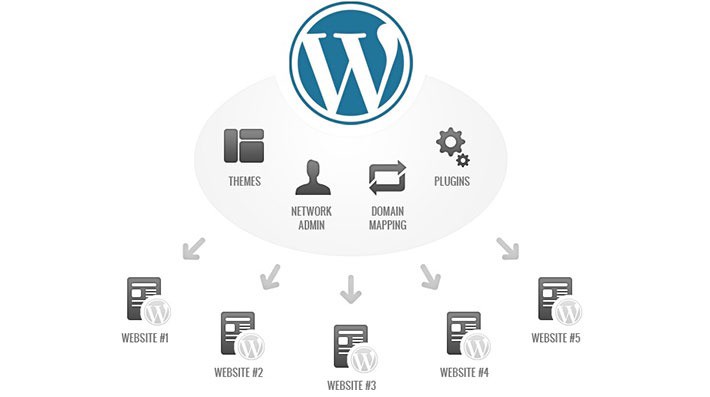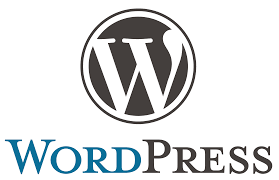WordPress is a powerful and popular content management system (CMS) that enables users to easily create and manage websites. It is an ideal choice for those who are new to web development as it is very user friendly and has an intuitive interface. With WordPress, you can create beautiful websites without having to write any code. You can customize the look of your site with themes, add plugins to power up the functionality, and create content using the built-in editor. Whether you are creating a blog, a portfolio, an eCommerce store, or any other type of website, WordPress is a great choice for beginners.
Understanding the Different WordPress Platforms
WordPress is one of the most popular content management systems (CMS) available today, with millions of users around the world. It’s easy to use and allows for a wide range of customization, making it a great choice for web developers and designers. However, many people don’t realize there are actually three different types of WordPress platforms: WordPress.com, WordPress.org, and WordPress Multisite. Each has its own unique features and capabilities, so it’s important to understand the differences between them before choosing which one is right for your project.
WordPress.com is the most basic platform, making it ideal for beginners. It offers limited customization options and comes with hosting included. It does not require any coding knowledge and comes with a free domain name and hosting. It is a great choice for those who want to quickly set up a blog or website without dealing with the technical aspects of building a website.
WordPress.org is the more advanced platform and is the best choice for businesses, web developers, and designers. It offers full customization options and allows users to install plugins and themes to add functionality and design. It also provides access to the WordPress source code, allowing users to modify and customize the platform to their heart’s content.
Finally, WordPress Multisite is a platform for those who want to manage multiple websites from one place. It allows users to manage multiple WordPress websites from a single dashboard, making it easier to manage multiple sites.
No matter which WordPress platform you choose, make sure to do your research to ensure you are choosing the right one for your needs. Each platform offers different features and capabilities, so be sure to understand the differences between them before making your decision.
Learning to Use the WordPress Dashboard
Learning to use the WordPress Dashboard can seem daunting at first, but once you understand how it works, it can become a powerful tool. The WordPress Dashboard is the main control panel for your WordPress site, and with it you can manage posts, pages, and other content on your site.
The WordPress Dashboard is divided into various sections, such as the Home, Posts, Media, Pages, Comments, and Settings. Each section has its own set of menus and tools that you can use to manage different aspects of your site. The Home page allows you to view your most recent posts, view your site stats, and manage your site’s settings.
The Posts section lets you create new posts, edit existing posts, and manage categories. The Media section lets you upload images, videos, and other media to your site. The Pages section lets you create and manage pages on your site. The Comments section lets you manage comments on your posts. Finally, the Settings section lets you manage your site’s general settings.
The WordPress Dashboard is a powerful tool for managing your WordPress site, and once you understand how it works, it can become a great asset for your business. With the WordPress Dashboard, you can easily manage your posts, pages, and other content on your site, as well as manage your site’s general settings. Take some time to explore the WordPress Dashboard and see what it can do for you.
Creating Content for Your WordPress Site
Creating content for your WordPress site is a great way to engage your audience and promote your business. Whether you’re writing blog posts, creating videos, or designing graphics, having quality content is essential for connecting with visitors. WordPress makes it easy to create and manage content, allowing you to quickly and easily post new content on your website. Here are a few tips to help you create content for your WordPress site:
1. Brainstorm Ideas: Before you start creating content, spend some time brainstorming ideas. Think about topics related to your business or industry that your audience would find interesting. You can also look at what other businesses in your industry are talking about and come up with your own unique spin on the topic.
2. Research: Once you’ve come up with a few ideas, it’s time to start researching. Use online resources such as Google, Wikipedia, and industry-specific sites to find out more about the topics you’ve chosen. This will help you develop a more detailed understanding of the topic and provide you with valuable content to use in your post.
3. Create a Plan: A good content strategy should include a plan for creating and publishing content. Decide on the type of content you want to create, when you’ll create it, and how often you’ll publish it. This will help you stay organized and ensure that your content is consistent and up-to-date.
4. Create Quality Content: Once you have a plan in place, it’s time to start creating quality content. Use visuals to make your content more engaging, and make sure that all of your content is original and provides value to your audience.
Creating content for your WordPress site is an important part of building an engaged audience and promoting your business. With these tips, you’ll be able to create quality content that resonates with your audience and drives results.
Essential WordPress Plugins and Security Tips for Beginners
WordPress is one of the most popular content management systems (CMS) in the world, and for good reason. It’s easy to use and provides a wide variety of features and plugins. However, WordPress is also a prime target for hackers, so it’s important to understand the essential WordPress plugins and security tips for beginners.
First and foremost, it’s essential to keep your WordPress installation up to date. Not only does this ensure that you have access to the latest features and bug fixes, but it also helps to keep your site secure. Make sure to update your WordPress core, themes, and plugins regularly.
Next, it’s important to be aware of the security plugins available for WordPress. These plugins can help protect your site from malicious attacks and block unwanted visitors. Some popular security plugins include WordFence, iThemes Security, and Sucuri Security.
Finally, it’s important to use strong passwords and two-factor authentication when possible. Long, randomized passwords are much harder for hackers to crack, and two-factor authentication adds an extra layer of security. Additionally, it’s a good idea to back up your site regularly in case of accidental data loss.
In summary, WordPress is a great choice for creating a website, but it’s important to understand the essential plugins and security tips for beginners. Keeping your WordPress installation up to date, using security plugins, and implementing strong passwords and two-factor authentication are all essential steps in keeping your site secure.
In conclusion, WordPress for Beginners: The Basics of Creating a Site is an excellent resource for anyone looking to create a website using WordPress. The course covers the basics of setting up WordPress, from selecting a domain name to installing themes and plugins. It also provides guidance on how to create pages and posts, use widgets, and create menus. With this knowledge, users can create a professional-looking website in a relatively short amount of time. Additionally, the course provides helpful tips and tricks for optimizing website performance, making it easier for users to get the most out of their website.













